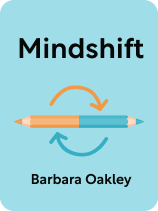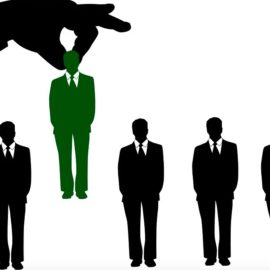

This article is an excerpt from the Shortform book guide to "Mindshift" by Barbara Oakley. Shortform has the world's best summaries and analyses of books you should be reading.
Like this article? Sign up for a free trial here.
Are you unhappy at work? Interested in another field? Worried that your job is in danger of becoming obsolete?
Barbara Oakley says it’s never too late to make a career change. In her book Mindshift, she asserts that you can have a mindshift regardless of your age or occupation. That means expanding your skill set—and, consequently, your opportunities—through transformative learning.
Keep reading to learn how to make a career change with three steps from Oakley.
How to Make a Career Change
Oakley’s advice on how to make a career change is threefold: change your perspective, determine what you want to do next, and learn how to learn. Let’s take a look at each step in detail.
Step #1: Change Your Perspective
Oakley says that to have a mindshift, you first need to adjust your mindset. In particular, you should realize the value of your experience and be humble.
Realize the Value of Your Experience
Oakley writes that shifting to something new may seem intimidating because you feel like others in your desired field have a head start, but she argues that starting later than your peers doesn’t necessarily put you at a disadvantage. In fact, she asserts that your experience in one field gives you unique, transferable skills that you can use in unexpected ways in another field. She gives the example of a Juilliard-trained musician who later became a doctor; his musically trained ear gave him the unique ability to detect irregular heart sounds.
Further, Oakley says that your experiences don’t even have to be related to your career and can instead come from your hobbies. For example, if you’ve built a respectable following by making cooking videos on your personal TikTok account, you might parlay this experience into helping your employer generate more engaging Instagram reels on the company account.
Be Humble
While it’s important to know the value you bring to a new field, it’s equally important to embrace being a beginner. It may be difficult to find yourself back at square one, especially if you’re already highly accomplished in another field, but acknowledging your newbie status can make you more open to learning new things because you accept that you don’t know it all.
Step #2: Determine What’s Next
Once you’ve reframed your thinking and opened your mind to the possibility of learning new skills, reflect on your desired career path.
There are two ways to go about making a career change. The first is to shift to another field entirely, which requires persistence and a healthy dose of the humility Oakley prescribes. You might need to immerse yourself in an environment where you’ll get plenty of guidance and exposure to your target field. For example, if you want to become a pastry chef, you might leave a cushy office job so you can work as a server at a restaurant and closely observe a patissier in action.
(Shortform note: Making a big career change can be risky, so Scott Pape, “The Barefoot Investor,” gives two tips in his eponymous book: First, make the transition gradual. Keep your current job, and dip your toe into the field you’re interested in by working a side job. And second, connect with people in your desired field. Ask them about their success strategies and any leads for work opportunities.)
The second way to make a career change is to shift to something that’s still within your current field. Oakley says this is an especially viable option for those who’ve already spent years of study and practice in a demanding field such as medicine or law—you can explore another specialization instead of starting from scratch and putting in more years of exhaustive study. For example, if you’re an accountant, you can go from being an auditor who inspects companies to a financial consultant who helps individuals prepare for retirement.
(Shortform note: If you can’t decide which path to take next, experts recommend putting two career options side by side—if you had to pick one, which would it be? Then replace the career you didn’t pick with another career and choose again. Keep going until you have no more options and are left with The One. If, in the end, you find that two options are equally enticing, pick the one that’s easier for you to shift to, maybe because you have someone in your network who can help you get established in the field.)
Step #3: Learn How to Learn
Once you determine what you want to learn, come up with a plan to learn it. The kind of learning you did in school, which may have focused on rote memorization, may not be the best route to achieving your goals. Oakley says that to learn more effectively, you should use both modes of your brain—focused mode and diffuse mode.
Focused mode is when you concentrate fully on the material you’re learning. Oakley recommends “chunking” to help you master challenging concepts and skills. Chunking means breaking down a skill or concept into smaller parts (or chunks) and practicing each part over and over. Oakley explains that this repeated practice of small parts not only makes learning more manageable but also forms and strengthens the connections between brain cells. This leads to mastery of a skill.
You can apply chunking to both mental and physical skills. For example, if you’re learning something numbers-intensive, solve the same challenging math problem again and again over a few days until it becomes easy for you. If you’re learning to be a yoga instructor, you can practice a sequence of five poses at a time instead of trying to memorize an entire class’s worth of poses. Aside from being easier to master, chunking poses in this way also allows you to rearrange chunks and come up with various sequences of poses.
On the other hand, diffuse mode is when you allow your brain to relax. Research suggests that this mode is a necessary part of learning, giving your brain time to process what you’ve learned, store it, and connect it with other information, leading to new insights. One example of diffuse mode at work is Archimedes’s eureka moment: When the Greek polymath was struggling to figure out how to prove that a crown was made of pure gold, he had a sudden insight while he was taking a bath and his brain was in relaxation mode.
Oakley says the Pomodoro technique—a method that entails 25 minutes of work interspersed with short breaks—is one way to tap into the powers of your brain’s two modes. During the 25 minutes of work, you use focused mode to concentrate on, say, solving a math problem. During the short break, you go into diffuse mode, allowing your brain to connect what you just learned with other knowledge you have stored in your brain.

———End of Preview———
Like what you just read? Read the rest of the world's best book summary and analysis of Barbara Oakley's "Mindshift" at Shortform.
Here's what you'll find in our full Mindshift summary:
- That it's never too late to make a career change
- How to overcome the mental barriers that hold you back
- Why career shifts are essential in the fast-changing world






